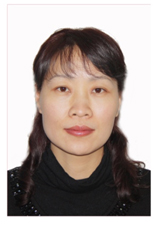Structural Characteristics and Classification of Patina on Ancient Bronzes

摘 要
对近20年的青铜器锈层研究进行统计分析,古代锈层剖面样本依据其成分和结构可分为含氯锈层(Type Ⅰ)、氧化锈层(Type Ⅱ)、水合锈层(Type Ⅲ)和富锡锈层(Type Ⅳ)4种基本类型。在此基础上,将数量多且具有代表性的结构作为标准型,其余作为衍生型。锈层类型的多样性与环境中离子含量和扩散过程有关。环境中氯离子作用于金属基体的过程是影响氯化亚铜层形成的重要因素。环境中其他阴离子和氧气含量直接影响氧化产物及其次生腐蚀产物的生成和转化。在此过程中,离子的扩散过程直接控制腐蚀产物的沉积和分层,形成结构多变的锈蚀层。
 锈层结构
锈层结构  分类
分类  腐蚀机理
腐蚀机理  bronze
bronze  patina structure
patina structure  classification
classification  corrosion mechanism
corrosion mechanism 
Abstract
Statistical analysis is carried out on the bronze rust layer research in the past 20 years, and according to their composition and structure,the ancient rust layer profile samples are divided into four basic types: chlorine-containing rust layer (Type Ⅰ), oxide rust layer (Type Ⅱ), hydrated rust layer (Type Ⅲ) and tin-rich rust layer (Type Ⅳ). On this basis, a large number of representative rust layers are used as standard rust layers, and the rest are regarded as derived rust layers. The diversity of rust layer types is related to the ion content and diffusion process in the environment. The process of chloride ions acting on the metal matrix in the environment is an important factor affecting the formation of the cuprous chloride layer. The content of other anions and oxygen in the environment directly affects the generation and transformation of oxidation products and their secondary corrosion products. In this process, the diffusion process of ions directly controls the deposition and stratification of corrosion products, forming a rust layer with variable structure.
中图分类号 TG174 DOI 10.11973/fsyfh-202301008
所属栏目 试验研究
基金项目 北京市自然科学基金(2222063)
收稿日期 2022/3/2
修改稿日期
网络出版日期
作者单位点击查看
引用该论文: YANG Xin,WU Wei,CHEN Kunlong. Structural Characteristics and Classification of Patina on Ancient Bronzes[J]. Corrosion & Protection, 2023, 44(1): 42
共有人对该论文发表了看法,其中:
人认为该论文很差
人认为该论文较差
人认为该论文一般
人认为该论文较好
人认为该论文很好






参考文献
【1】ODDY A,SCOTT D A. Copper and bronze in art:corrosion,colorants,conservation[J]. Studies in Conservation,2002,47(4):277.
【2】ROBBIOLA L,BLENGINO J M,FIAUD C. Morphology and mechanisms of formation of natural patinas on archaeological Cu-Sn alloys[J]. Corrosion Science,1998,40(12):2083-2111.
【3】OUDBASHI O,HASANPOUR A,DAVAMI P. Investigation on corrosion stratigraphy and morphology in some Iron Age bronze alloys vessels by OM,XRD and SEM-EDS methods[J]. Applied Physics A,2016,122(4):1-11.
【4】刘薇,李玲,卫扬波,等. 湖北叶家山墓地出土青铜器的锈层结构研究[J]. 江汉考古,2019(4):116-126.
【5】周浩,祝鸿范,蔡兰坤. 青铜器锈蚀结构组成及形态的比较研究[J]. 文物保护与考古科学,2005,17(3):22-27.
【6】梁宏刚. 关于金属文物腐蚀成因及其保护修复技术的理论探索[J]. 江汉考古,2021(6):240-245,267.
【7】LIU W,LI M,WU N,et al. A new application of Fiber optics reflection spectroscopy (FORS):identification of "bronze disease" induced corrosion products on ancient bronzes[J]. Journal of Cultural Heritage,2021,49:19-27.
【8】INGO G M,DE CARO T,RICCUCCI C,et al. Large scale investigation of chemical composition,structure and corrosion mechanism of bronze archeological artefacts from Mediterranean Basin[J]. Applied Physics A,2006,83(4):513-520.
【9】INGO G M,ÇILINGIRO LU A,FARALDI F,et al. The bronze shields found at the Ayanis fortress (Van region,Turkey):manufacturing techniques and corrosion phenomena[J]. Applied Physics A,2010,100(3):793-800.
【10】QUARANTA M. On the degradation mechanisms under the influence of pedological factors through the study of archeological bronze patina[D]. Alma Mater Studiorum UniversitÀ Di Bologna,2009.
【11】牟笛,崔本信,宋国定,等. 河南南阳夏饷铺墓地鄂国青铜器腐蚀状况分析[J]. 江汉考古,2014(1):102-112,93.
【12】SCOTT D A. Periodic corrosion phenomena in bronze antiquities[J]. Studies in Conservation,1985,30(2):49-57.
【13】王鑫光,梁法伟,唐静,等. 荥阳小胡村墓地出土部分铜器的科学分析[J]. 文物保护与考古科学,2018,30(1):78-85.
【14】MUROS V,SCOTT D A. The occurrence of brochantite on archaeological bronzes:a case study from Lofkënd,Albania[J]. Studies in Conservation,2018,63(2):113-125.
【15】穆艺,罗武干,李玲,等. 湖北随州叶家山西周墓地出土青铜器锈层结构的综合分析[J]. 文物保护与考古科学,2020,32(3):8-16.
【16】谭德睿,吴来明,唐静娟,等. 古铜镜"水银沁"表面形成机理的研究[J]. 文物保护与考古科学,1997,9(1):1-9.
【17】刘薇,陈建立. 古代青铜器表面高锡锈层研究综述[J]. 中国国家博物馆馆刊,2019(5):146-160.
【18】YOUNG M L,CASADIO F,SCHNEPP S,et al. Non-invasive characterization of manufacturing techniques andcorrosion of ancient Chinese bronzes and a later replica using synchrotron X-ray diffraction[J]. Applied Physics A,2010,100(3):635-646.
【19】KEAR G,BARKER B D,WALSH F C. Electrochemical corrosion of unalloyed copper in chloride media-a critical review[J]. Corrosion Science,2004,46(1):109-135.
【20】JMIAI A,EL IBRAHIMI B,TARA A,et al. Chitosan as an eco-friendly inhibitor for copper corrosion in acidic medium:protocol and characterization[J]. Cellulose,2017,24(9):3843-3867.
【21】SERGHINI-IDRISSI M,BERNARD M C,HARRIF F Z,et al. Electrochemical and spectroscopic characterizations of patinas formed on an archaeological bronze coin[J]. Electrochimica Acta,2005,50(24):4699-4709.
【22】CHAUHAN D S,QURAISHI M A,CARRIōRE C,et al. Electrochemical,ToF-SIMS and computational studies of 4-amino-5-methyl-4H-1,2,4-triazole-3-thiol as a novel corrosion inhibitor for copper in 3.5% NaCl[J]. Journal of Molecular Liquids,2019,289:111113.
【23】许淳淳,张玉忠. 模拟闭塞电池法研究青铜病的发展过程[J]. 北京化工大学学报(自然科学版),2000,27(4):75-78.
【24】祝鸿范,周浩,蔡兰坤. 青铜病的闭塞孔穴腐蚀特征的研究[J]. 文物保护与考古科学,2002,14(S1):29-50.
【25】SHAIK M A,SYED K H,GOLLA B R. Electrochemical behavior of mechanically alloyed hard Cu-Al alloys in marine environment[J]. Corrosion Science,2019,153:249-257.
【26】GRAYBURN R,DOWSETT M,HAND M,et al. Tracking the progression of bronze disease-A synchrotron X-ray diffraction study of nantokite hydrolysis[J]. Corrosion Science,2015,91:220-223.
【27】DESLOUIS C,TRIBOLLET B,MENGOLI G,et al. Electrochemical behaviour of copper in neutral aerated chloride solution.II.Impedance investigation[J]. Journal of Applied Electrochemistry,1988,18(3):384-393.
【28】WANG J L,XU C C,LV G C. Formation processes of CuCl and regenerated Cu crystals on bronze surfaces in neutral and acidic media[J]. Applied Surface Science,2006,252(18):6294-6303.
【29】张晓梅,原思训,刘煜,等. 周原遗址及渔国墓地出土青铜器锈蚀研究:中国科协首届学术年会,中国浙江杭州,1999.
【30】金普军,秦颍,胡雅丽,等. 九连墩墓地1、2号墓出土青铜器上锈蚀产物分析[J]. 江汉考古,2009(1):112-119,153.
【31】XU C C,WANG J L. Investigation of the chemical and electrochemical behaviour of mass transfer at an archaeological bronze/soil interface[J]. Anti-Corrosion Methods and Materials,2003,50(5):326-333.
【32】郭菲,梅建军,杨军昌,等. 秦陵出土青铜水禽锈体组织结构的初步分析[J]. 文物保护与考古科学,2013,25(4):37-45.
【33】HE L,LIANG J Y,ZHAO X,et al. Corrosion behavior and morphological features of archeological bronze coins from ancient China[J]. Microchemical Journal,2011,99(2):203-212.
【34】ALFANTAZI A M,AHMED T M,TROMANS D. Corrosion behavior of copper alloys in chloride media[J]. Materials & Design,2009,30(7):2425-2430.
【35】李世彩. 安徽省江淮地区出土青铜器的相关研究[D]. 合肥:中国科学技术大学,2017.
【36】TYLECOTE R F. The effect of soil conditions on the long-term corrosion of buried tin-bronzes and copper[J]. Journal of Archaeological Science,1979,6(4):345-368.
【37】ROBBIOLA L,HURTEL L. Standard nature of the passive layers of buried archaeological bronze-The example of two roman half-length portraits:METAL 95[C]//International conference on metals conservation. Semur-en-Auxois:[s.n.],1995.
【38】孙淑云,马肇曾,金莲姬,等. 土壤中腐殖酸对铜镜表面"黑漆古"形成的影响[J]. 文物,1992(12):79-89.
【2】ROBBIOLA L,BLENGINO J M,FIAUD C. Morphology and mechanisms of formation of natural patinas on archaeological Cu-Sn alloys[J]. Corrosion Science,1998,40(12):2083-2111.
【3】OUDBASHI O,HASANPOUR A,DAVAMI P. Investigation on corrosion stratigraphy and morphology in some Iron Age bronze alloys vessels by OM,XRD and SEM-EDS methods[J]. Applied Physics A,2016,122(4):1-11.
【4】刘薇,李玲,卫扬波,等. 湖北叶家山墓地出土青铜器的锈层结构研究[J]. 江汉考古,2019(4):116-126.
【5】周浩,祝鸿范,蔡兰坤. 青铜器锈蚀结构组成及形态的比较研究[J]. 文物保护与考古科学,2005,17(3):22-27.
【6】梁宏刚. 关于金属文物腐蚀成因及其保护修复技术的理论探索[J]. 江汉考古,2021(6):240-245,267.
【7】LIU W,LI M,WU N,et al. A new application of Fiber optics reflection spectroscopy (FORS):identification of "bronze disease" induced corrosion products on ancient bronzes[J]. Journal of Cultural Heritage,2021,49:19-27.
【8】INGO G M,DE CARO T,RICCUCCI C,et al. Large scale investigation of chemical composition,structure and corrosion mechanism of bronze archeological artefacts from Mediterranean Basin[J]. Applied Physics A,2006,83(4):513-520.
【9】INGO G M,ÇILINGIRO LU A,FARALDI F,et al. The bronze shields found at the Ayanis fortress (Van region,Turkey):manufacturing techniques and corrosion phenomena[J]. Applied Physics A,2010,100(3):793-800.
【10】QUARANTA M. On the degradation mechanisms under the influence of pedological factors through the study of archeological bronze patina[D]. Alma Mater Studiorum UniversitÀ Di Bologna,2009.
【11】牟笛,崔本信,宋国定,等. 河南南阳夏饷铺墓地鄂国青铜器腐蚀状况分析[J]. 江汉考古,2014(1):102-112,93.
【12】SCOTT D A. Periodic corrosion phenomena in bronze antiquities[J]. Studies in Conservation,1985,30(2):49-57.
【13】王鑫光,梁法伟,唐静,等. 荥阳小胡村墓地出土部分铜器的科学分析[J]. 文物保护与考古科学,2018,30(1):78-85.
【14】MUROS V,SCOTT D A. The occurrence of brochantite on archaeological bronzes:a case study from Lofkënd,Albania[J]. Studies in Conservation,2018,63(2):113-125.
【15】穆艺,罗武干,李玲,等. 湖北随州叶家山西周墓地出土青铜器锈层结构的综合分析[J]. 文物保护与考古科学,2020,32(3):8-16.
【16】谭德睿,吴来明,唐静娟,等. 古铜镜"水银沁"表面形成机理的研究[J]. 文物保护与考古科学,1997,9(1):1-9.
【17】刘薇,陈建立. 古代青铜器表面高锡锈层研究综述[J]. 中国国家博物馆馆刊,2019(5):146-160.
【18】YOUNG M L,CASADIO F,SCHNEPP S,et al. Non-invasive characterization of manufacturing techniques andcorrosion of ancient Chinese bronzes and a later replica using synchrotron X-ray diffraction[J]. Applied Physics A,2010,100(3):635-646.
【19】KEAR G,BARKER B D,WALSH F C. Electrochemical corrosion of unalloyed copper in chloride media-a critical review[J]. Corrosion Science,2004,46(1):109-135.
【20】JMIAI A,EL IBRAHIMI B,TARA A,et al. Chitosan as an eco-friendly inhibitor for copper corrosion in acidic medium:protocol and characterization[J]. Cellulose,2017,24(9):3843-3867.
【21】SERGHINI-IDRISSI M,BERNARD M C,HARRIF F Z,et al. Electrochemical and spectroscopic characterizations of patinas formed on an archaeological bronze coin[J]. Electrochimica Acta,2005,50(24):4699-4709.
【22】CHAUHAN D S,QURAISHI M A,CARRIōRE C,et al. Electrochemical,ToF-SIMS and computational studies of 4-amino-5-methyl-4H-1,2,4-triazole-3-thiol as a novel corrosion inhibitor for copper in 3.5% NaCl[J]. Journal of Molecular Liquids,2019,289:111113.
【23】许淳淳,张玉忠. 模拟闭塞电池法研究青铜病的发展过程[J]. 北京化工大学学报(自然科学版),2000,27(4):75-78.
【24】祝鸿范,周浩,蔡兰坤. 青铜病的闭塞孔穴腐蚀特征的研究[J]. 文物保护与考古科学,2002,14(S1):29-50.
【25】SHAIK M A,SYED K H,GOLLA B R. Electrochemical behavior of mechanically alloyed hard Cu-Al alloys in marine environment[J]. Corrosion Science,2019,153:249-257.
【26】GRAYBURN R,DOWSETT M,HAND M,et al. Tracking the progression of bronze disease-A synchrotron X-ray diffraction study of nantokite hydrolysis[J]. Corrosion Science,2015,91:220-223.
【27】DESLOUIS C,TRIBOLLET B,MENGOLI G,et al. Electrochemical behaviour of copper in neutral aerated chloride solution.II.Impedance investigation[J]. Journal of Applied Electrochemistry,1988,18(3):384-393.
【28】WANG J L,XU C C,LV G C. Formation processes of CuCl and regenerated Cu crystals on bronze surfaces in neutral and acidic media[J]. Applied Surface Science,2006,252(18):6294-6303.
【29】张晓梅,原思训,刘煜,等. 周原遗址及渔国墓地出土青铜器锈蚀研究:中国科协首届学术年会,中国浙江杭州,1999.
【30】金普军,秦颍,胡雅丽,等. 九连墩墓地1、2号墓出土青铜器上锈蚀产物分析[J]. 江汉考古,2009(1):112-119,153.
【31】XU C C,WANG J L. Investigation of the chemical and electrochemical behaviour of mass transfer at an archaeological bronze/soil interface[J]. Anti-Corrosion Methods and Materials,2003,50(5):326-333.
【32】郭菲,梅建军,杨军昌,等. 秦陵出土青铜水禽锈体组织结构的初步分析[J]. 文物保护与考古科学,2013,25(4):37-45.
【33】HE L,LIANG J Y,ZHAO X,et al. Corrosion behavior and morphological features of archeological bronze coins from ancient China[J]. Microchemical Journal,2011,99(2):203-212.
【34】ALFANTAZI A M,AHMED T M,TROMANS D. Corrosion behavior of copper alloys in chloride media[J]. Materials & Design,2009,30(7):2425-2430.
【35】李世彩. 安徽省江淮地区出土青铜器的相关研究[D]. 合肥:中国科学技术大学,2017.
【36】TYLECOTE R F. The effect of soil conditions on the long-term corrosion of buried tin-bronzes and copper[J]. Journal of Archaeological Science,1979,6(4):345-368.
【37】ROBBIOLA L,HURTEL L. Standard nature of the passive layers of buried archaeological bronze-The example of two roman half-length portraits:METAL 95[C]//International conference on metals conservation. Semur-en-Auxois:[s.n.],1995.
【38】孙淑云,马肇曾,金莲姬,等. 土壤中腐殖酸对铜镜表面"黑漆古"形成的影响[J]. 文物,1992(12):79-89.
相关信息
























